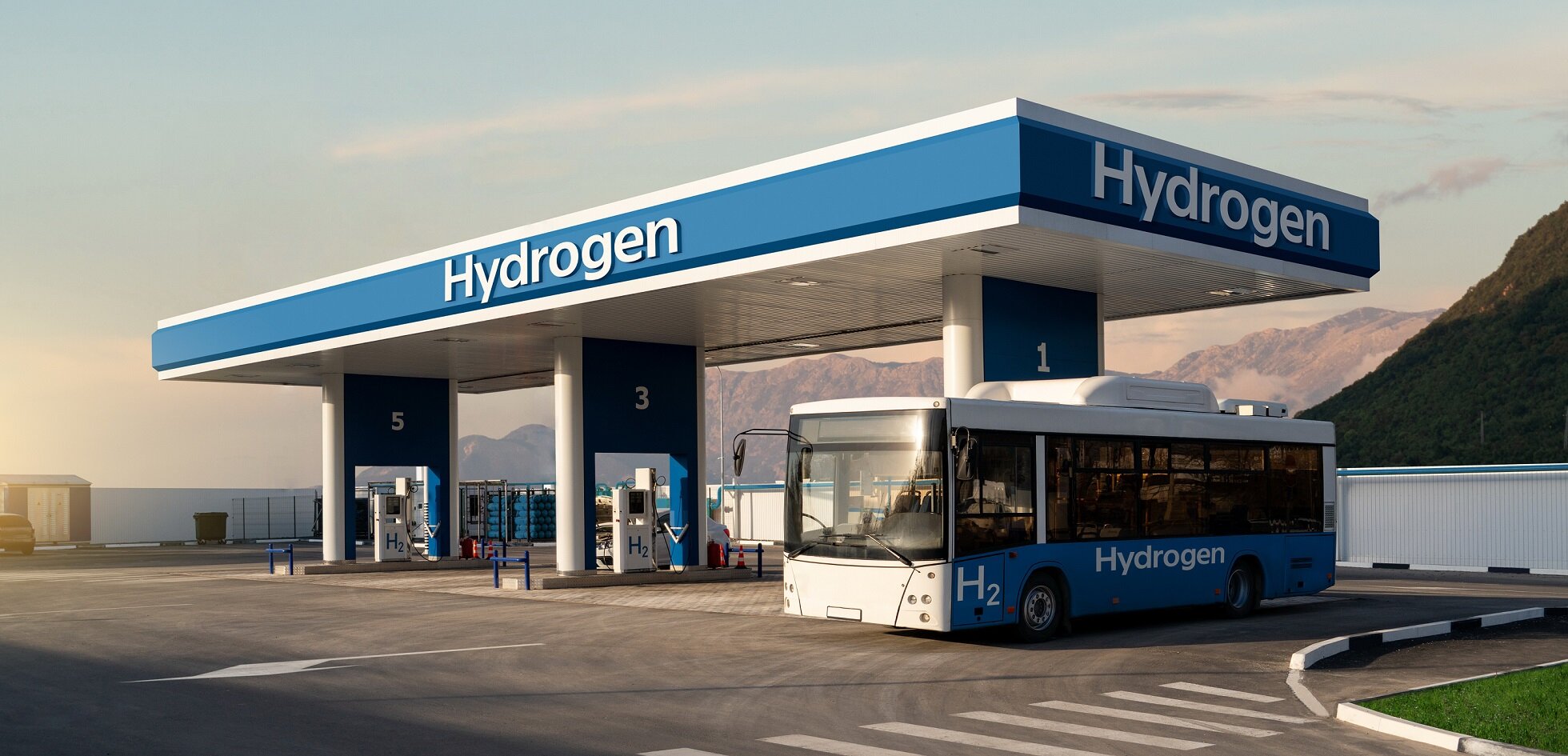Stanford and Cornell-based scientists had a closer look at blue hydrogen, frequently touted as a clean and green fuel that can help in our ongoing fight against climate change. However, it turns out that it may even be more harmful than burning fossil fuels.
Image Credit: Scharfsinn via Shutterstock / HDR tune and edited by Universal-Sci
By now, most of us have heard about hydrogen as a potential future energy source for cars and other applications. However, fewer of us know that there are many different ways to create or extract hydrogen, each identified with a different color code.
What is the difference between green, gray, purple, turquoise and blue hydrogen?
Green hydrogen, for example, is formed using renewable electricity (wind, solar, etc.) via the electrolysis of water. Purple/red hydrogen is created by the use of nuclear power. Turquoise hydrogen is created by thermal splitting methane via methane pyrolysis. Natural gas is passed through a molten metal that releases hydrogen gas as well as solid carbon (this technology has not yet made it through its experimental phase).
Almost all of the hydrogen currently produced worldwide is so-called 'gray hydrogen.' Gray hydrogen is produced via SMR (Steam Methane Reforming). Here high-pressure steam (H2O) reacts with natural gas (CH4), resulting in hydrogen (H2) and the greenhouse gas CO2.
This article deals with blue hydrogen. Blue hydrogen is actually gray hydrogen but with one difference: CO2 released in the process of hydrogen production is mostly captured and stored. This process is called CCS (Carbon Capture & Storage).
Blue hydrogen is often touted as a clean and green fuel that can help combat climate change. However, Stanford and Cornell-based scientists now think it may harm the climate even more than burning fossil fuel.
According to a new study authored by Robert Howarth, professor of ecology and environmental biology at Cornell, and ark Z. Jacobson, professor of civil and environmental engineering at Stanford, the carbon footprint of creating blue hydrogen is more than 20% larger than using natural gas or coal directly for heat and approximately 60% larger than using diesel oil for heat.
Green hydrogen is a far better alternative - Image Credit: petrmalinak via Shutterstock / HDR tune by Universal-Sci
As mentioned above, the creation of blue hydrogen starts with converting methane to hydrogen and carbon dioxide by using heat, steam, and pressure (gray hydrogen) but goes further to capture some of the carbon dioxides. Following the definition from the U.S. Department of Energy, gray hydrogen officially becomes blue hydrogen once the byproduct carbon dioxide and the other impurities are sequestered.
According to Howarth, no effort was made to capture the carbon dioxide byproduct of gray hydrogen in the past, and the greenhouse gas emissions have been tremendous. Currently, the industry promotes blue hydrogen as a solution, an approach that still uses the methane from natural gas while attempting to capture the byproduct carbon dioxide. But, unfortunately, emissions remain very large.
Howarth continues by explaining that methane is a very potent greenhouse gas. It is over 100 times more potent as an atmospheric warming agent than carbon dioxide when first emitted. The United Nations' Intergovernmental Panel on Climate Change report confirms that cumulatively to date over the past century, methane has contributed about two-thirds as much to global warming as carbon dioxide.
Emissions resulting from the creation of blue hydrogen are less than for gray hydrogen, but just by about 9% to 12%.
"Blue hydrogen is hardly emissions free," wrote the researchers. According to them, the use of blue hydrogen as a method to combat climate change is only effective if it is actually feasible to store carbon dioxide permanently without it leaking back into the atmosphere.
Howarth stated in a press release that politicians have yet to catch on with the science surrounding blue hydrogen. Currently, billions of tax dollars are earmarked to subsidize the hydrogen industry. ''Blue hydrogen sounds good, sounds modern, and sounds like a path to our energy future. It is not."
Green hydrogen, made with renewable electricity on the other hand, is actually eco-friendly. But as it is green, hydrogen production is tiny and insignificant, too small to make an impact globally.
Howarth: "The best hydrogen, the green hydrogen derived from electrolysis – if used wisely and efficiently – can be that path to a sustainable future," Howarth said. "Blue hydrogen is totally different."
If you are interested in more details about the study, check out the paper published in the science journal: Energy Science & Engineering, listed below.
Sources and further reading:
How green is blue hydrogen? (Energy Science & Engineering)
Why are there no hydrogen powered airplanes yet? (Universal-Sci)
If you enjoy our selection of content, consider subscribing to our newsletter
FEATURED ARTICLES:










